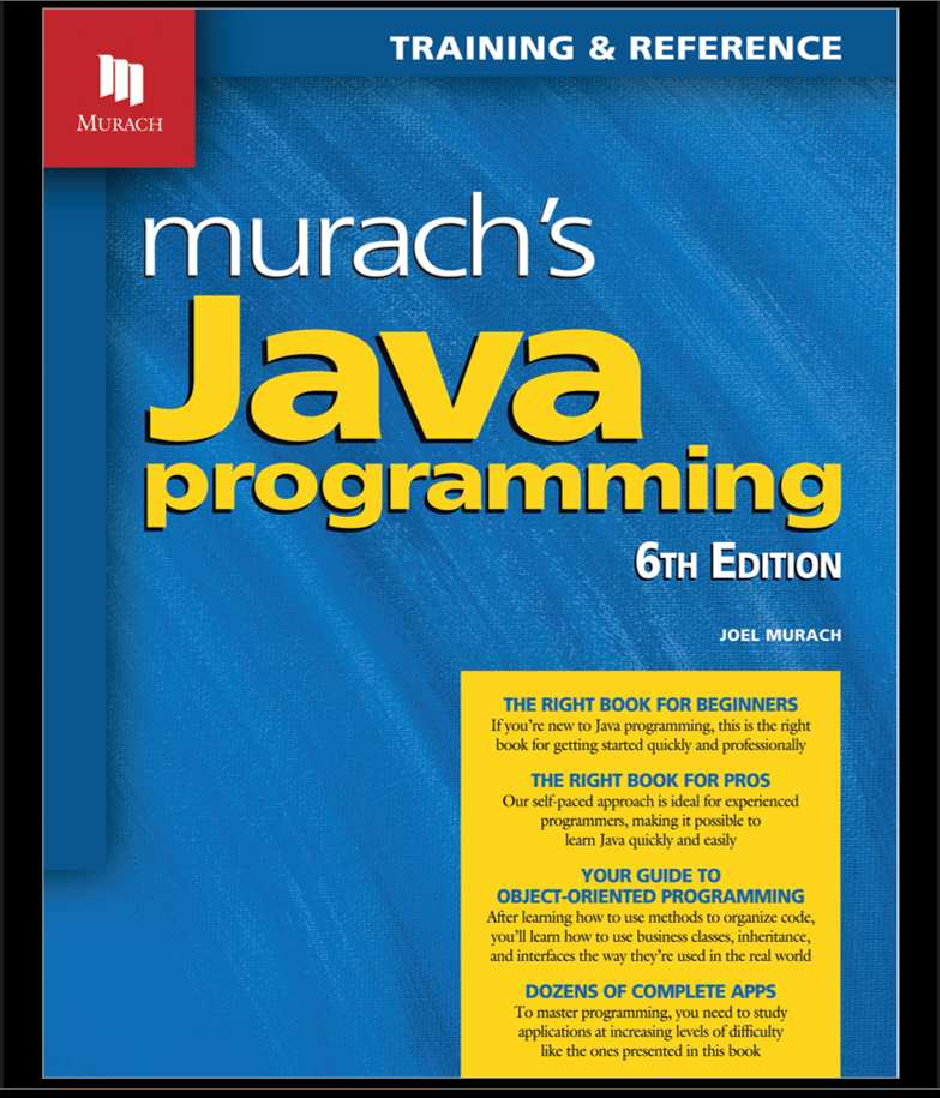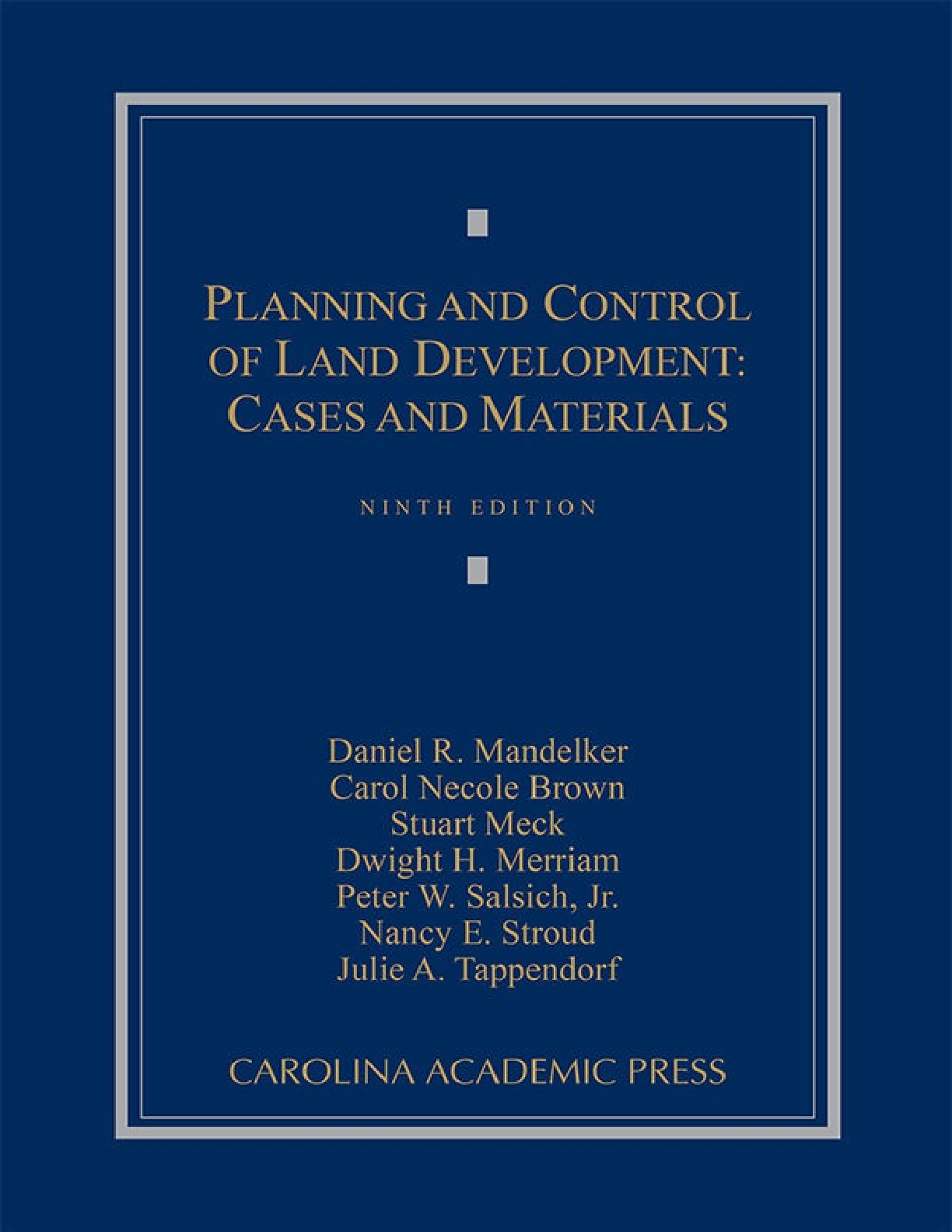Management > eBook-PDF > [eBook] [PDF] Fundamentals of Management, 9th Edition By Ricky Griffin (All)
[eBook] [PDF] Fundamentals of Management, 9th Edition By Ricky Griffin
Document Content and Description Below
Title Page Copyright Page Brief Contents Contents Preface Acknowledgments Part 1: An Introduction to Management Chapter 1: Understanding the Manager’s Job An Introduction to Management Kind... s of Managers Levels of Management Managing in Different Areas of the Organization Basic Management Functions Planning and Decision Making Tech Watch: “. . . But What Is a Social Media Manager?" Organizing Leading Controlling Fundamental Management Skills Technical Skills Interpersonal Skills Conceptual Skills Diagnostic Skills Communication Skills Decision-Making Skills Time Management Skills The Science and the Art of Management The Science of Management Leading the Way: “On the Fast Track" The Art of Management The Evolution of Management The Importance of Theory and History Why Theory? Why History The Historical Context of Management The Classical Management Perspective Scientific Management Administrative Management The Classical Management Perspective Today The Behavioral Management Perspective The Hawthorne Studies The Human Relations Movement Contemporary Behavioral Science in Management The Behavioral Management Perspective Today The Quantitative Management Perspective Management Science Operations Management The Quantitative Management Perspective Today Contemporary Management Perspectives The Systems Perspective The Contingency Perspective Contemporary Management Issues and Challenges Contemporary Applied Perspectives Contemporary Management Challenges Summary of Learning Outcomes and Key Points Discussion Questions Experiential Exercise Building Effective Time Management Skills Management at Work You Make the Call: Reed Hastings Doesn’t Like Standing Still Endnotes Chapter 2: The Environments of Organizations and Managers The Organization’s Environments The General Environment The Economic Dimension The Technological Dimension The Political–Legal Dimension The Task Environment Competitors Customers Supplier Regulators Strategic Partners Doing Business on Planet Earth: Raising the CSR Bar The Internal Environment Owners Board of Directors Employees Physical Work Environment The Ethical and Social Environment of Management Individual Ethics in Organizations Managerial Ethics Managing Ethical Behavior Emerging Ethical Issues Ethical Leadership Corporate Governance Ethics and Information Technology Social Responsibility in Organizations Arguments for Social Responsibility Arguments Against Social Responsibility Managing Social Responsibility Formal Organizational Dimensions Informal Organizational Dimensions The International Environment of Management Trends in International Business Levels of International Business Activity Exporting and Importing Licensing Strategic Alliances Direct Investment The Context of International Business The Cultural Environment Controls on International Trade Economic Communities The Role of the GATT and WTO The Organization’s Culture The Importance of Organizational Culture Determinants of Organizational Culture Managing Organizational Culture Leading the Way: Happy Fit Summary of Learning Outcomes and Key Points Discussion Questions Experiential Exercise Building Effective Communication Skills Management at Work You Make the Call: The Canary in Starbucks’ Coal Mine Endnotes Part 2: Planning Chapter 3: Planning and Strategic Management Planning and Organizational Goals Organizational Goals Purposes of Goals Kinds of Goals Kinds of Organizational Plans Strategic Plan Tactical Plans Operational Plans The Nature of Strategic Management The Components of Strategy Types of Strategic Alternatives Using Swot Analysis to Formulate Strategy Evaluating an Organization’s Strengths Evaluating an Organization’s Weaknesses Evaluating an Organization’s Opportunities and Threats Tech Watch: Starting Conversations Formulating Business-Level Strategies Generic Strategies Strategies Based on the Product Life Cycle Formulating Corporate-Level Strategies Single-Product Strategy Related Diversification Unrelated Related Diversification Leading the Way: The Beauty of Differentiation Managing Diversification BCG Matrix GE Business Screen Tactical Planning Developing Tactical Plans Executing Tactical Plans Operational Planning Single-Use Plans Programs Projects Standing Plans Policies Standard Operating Procedures Rules and Regulations Contingency Planning and Crisis Management Summary of Learning Outcomes and Key Points Discussion Questions Experiential Exercise Building Effective Communication and Interpersonal Skills Management at Work You Make the Call: Cruise Control Endnotes Chapter 4: Managing Decision Making The Nature of Decision Making Decision Making Defined Types of Decisions Decision-Making Conditions Decision Making Under Certainty Decision Making Under Risk Decision Making Under Uncertainty Rational Perspectives on Decision Making The Classical Model of Decision Making Steps in Rational Decision Making Recognizing and Defining the Decision Situation Identifying Alternatives Evaluating Alternatives Selecting the Best Alternative Implementing the Chosen Alternative Following up and Evaluating the Results Evidence-Based Management Behavioral Aspects of Decision Making The Administrative Model A World of Difference: A Verdict on Diversity Political Forces in Decision Making Intuition and Escalation of Commitment Intuition Escalation of Commitment Risk Propensity and Decision Making Ethics and Decision Making Doing Business on Planet Earth: Sealing the Deal Group and Team Decision Making in Organizations Forms of Group and Team Decision Making Interacting Groups or Teams Delphi Groups Nominal Groups Advantages of Group and Team Decision Making Disadvantages of Group and Team Decision Making Managing Group and Team Decision-Making Processes Summary of Learning Outcomes and Key Points Discussion Questions Experiential Exercise Building Effective Conceptual Skills Management at Work You Make the Call: Moneyball on Steroids Endnotes Chapter 5: Entrepreneurship and New Venture Management The Role of Entrepreneurship in Society Job Creation Innovation Importance to Big Business Strategy for Entrepreneurial Organizations Doing Business on Planet Earth: A New Model for Going Green Wholesaling Transportation Manufacturing Leading the Way: Current Affairs in the Electric Vehicle Business Emphasizing Distinctive Competencies Identifying Niches in Established Markets Identifying New Markets First-Mover Advantages Writing a Business Plan Entrepreneur and International Management Choosing an Industry Services Retailing Construction Finance and Insurance Structure of Entrepreneurial Organizations Financing the New Business Personal Resources Strategic Alliances Lenders Venture Capital Companies Small-Business Investment Companies SBA Financial Programs Sources of Management Advice Advisory Boards Management Consultants The Small Business Administration Networking Franchising Starting the New Business Buying an Existing Business Starting from Scratch The Performance of Entrepreneurial Organizations Trends in Small-Business Start-Ups Emergence of E-Commerce Crossovers from Big Business Opportunities for Minorities and Women Better Survival Rates Reasons for Failure Reasons for Success Summary of Learning Outcomes and Key Points Discussion Questions Experiential Exercise Building Effective Conceptual Skills Management at Work You Make the Call: Putting the Greek into Yogurt Endnotes Part 3: Organizing Chapter 6: Organization Structure and Design The Basic Elements of Organizing Job Specialization Benefits and Limitations of Specialization Alternatives to Specialization Grouping Jobs: Departmentalization Functional Departmentalization Product Departmentalization Customer Departmentalization Location Departmentalization Establishing Reporting Relationships Chain of Command Span of Management Tall Versus Flat Organizations Distributing Authority The Delegation Process Decentralization and Centralization Leading the Way: Feeding the Chicken Coordinating Activities The Need for Coordination Doing Business on Planet Earth: Collaboration, Connection, and Chromosomal Configuration Structural Coordination Techniques Electronic Coordination The Bureaucratic Model of Organization Design Situational Influences on Organization Design Core Technology Environment Organizational Size and Life Cycle Basic Forms of Organization Design Functional (U-Form) Design Conglomerate (H-Form) Design Divisional (M-Form) Design Matrix Design Hybrid Designs Emerging Issues in Organization Design The Team Organization The Virtual Organization The Learning Organization Summary of Learning Outcomes and Key Points Discussion Questions Experiential Exercise Building Effective Conceptual Skills Management at Work You Make the Call: Who’s the Boss Endnotes Chapter 7: Organization Change and Innovation The Nature of Organization Change Forces for Change External Forces Internal Forces Planned Versus Reactive Change Leading the Way: Am(Ortizing) Ex(Penses) Managing Change in Organizations Steps in the Change Process The Lewin Model A Comprehensive Approach to Change Understanding Resistance to Change Uncertainty Threatened Self-Interests Different Perceptions Feelings of Loss Overcoming Resistance to Change Participation Education and Communication Facilitation Force-Field Analysis Areas of Organization Change Changing Organization Structure and Design Changing Technology and Operations Changing People, Attitudes, and Behaviors Changing Business Processes World of Difference: To Offshore or Not to Offshore The Need for Business Process Change Approaches to Business Process Change Organization Development OD Assumptions OD Techniques The Effectiveness of OD Organizational Innovation The Innovation Process Innovation Development Innovation Application Application Launch Application Growth Innovation Maturity Innovation Decline Forms of Innovation Radical Versus Incremental Innovations Technical Versus Managerial Innovations Product Versus Process Innovations The Failure to Innovate Lack of Resources Failure to Recognize Opportunities Resistance to Change Promoting Innovation in Organizations The Reward System Organization Culture Intrapreneurship in Larger Organizations Summary of Learning Outcomes and Key Points Discussion Questions Experiential Exercise Building Effective Decision-Making Skills Management at Work You Make the Call: Cultivating Innovation at Ikea Endnotes Chapter 8: Managing Human Resources in Organizations The Environmental Context of HRM The Strategic Importance of HRM The Legal Environment of HRM Equal Employment Opportunity Compensation and Benefits Labor Relations Health and Safety Emerging Legal Issues Attracting Human Resources Human Resource Planning Job Analysis Forecasting Human Resource Demand and Supply Matching Human Resource Supply and Demand Recruiting Human Resources Selecting Human Resources Application Blanks Tests Interviews Assessment Centers Other Techniques Developing Human Resources Training and Development Assessing Training Needs Common Training Methods Tech Watch: What You Can Learn from Math Media Evaluation of Training Performance Appraisal Common Appraisal Methods Errors in Performance Appraisal Performance Feedback Maintaining Human Resources Determining Compensation Leading the Way: Holding True at Nucor Steel Wage-Level Decision Wage Structure Decision Individual Wage Decisions Determining Benefits Managing Workforce Diversity The Meaning of Diversity The Impact of Diversity Diversity as a Competitive Advantage Diversity as a Source of Conflict Managing Diversity in Organizations Individual Strategies Organizational Approaches Managing Labor Relations How Employees Form Unions Collective Bargaining New Challenges in the Changing Workplace Managing Knowledge Workers The Nature of Knowledge Work Knowledge Worker Management and Labor Markets Contingent and Temporary Workers Trends in Contingent and Temporary Employment Managing Contingent and Temporary Workers Summary of Learning Outcomes and Key Points Discussion Questions Experiential Exercise Building Effective Technical Skills Management at Work You Make the Call: No Company for Old-Fashioned Management Endnotes Part 4: Leading Chapter 9: Basic Elements of Individual Behavior in Organizations Understanding Individuals in Organizations The Psychological Contract The Person–Job Fit The Nature of Individual Differences Personality and Individual Behavior The “Big Five” Personality Traits The Myers–Briggs Framework Other Personality Traits at Work Emotional Intelligence Attitudes and Individual Behavior Work-Related Attitudes Job Satisfaction or Dissatisfaction Organizational Commitment Affect and Mood in Organizations Perception and Individual Behavior Basic Perceptual Processes Selective Perception Stereotyping Perception and Attribution Stress and Individual Behavior Causes and Consequences of Stress Causes of Stress Consequences of Stress A World of Difference: The Color of Stress Managing Stress Creativity in Organizations The Creative Individual Background Experiences and Creativity Personal Traits and Creativity Cognitive Abilities and Creativity The Creative Process Tech Watch: Picture a Better Mousetrap Preparation Incubation Insight Verification Enhancing Creativity in Organizations Types of Workplace Behavior Performance Behaviors Withdrawal Behaviors Organizational Citizenship Dysfunctional Behaviors Summary of Learning Outcomes and Key Points Discussion Questions Experiential Exercise Building Effective Time Management Skills Management at Work You Make the Call: Engaging with the Company Garbage Endnotes Chapter 10: Managing Employee Motivation and Performance The Nature of Motivation Content Perspectives on Motivation The Needs Hierarchy Approach The Two-Factor Theory Individual Human Needs Process Perspectives on Motivation Expectancy Theory Effort-to-Performance Expectancy Performance-to-Outcome Expectancy Outcomes and Valences The Porter–Lawler Extension Equity Theory Goal-Setting Theory Goal Difficulty Goal Specificity Reinforcement Perspectives on Motivation Kinds of Reinforcement in Organizations Leading the Way: To Reward, or to Punish?.… That Is the Question Providing Reinforcement in Organizations Popular Motivational Strategies Empowerment and Participation Alternative Forms of Work Arrangements Variable Work Schedules Flexible Work Schedules Job Sharing Telecommuting Using Reward Systems to Motivate Performance Merit Reward Systems Incentive Reward Systems Incentive Pay Plans Doing Business on Planet Earth: M(otivation) p(er) G(allon Other Forms of Incentive Team and Group Incentive Reward Systems Common Team and Group Reward Systems Other Types of Team and Group Rewards Executive Compensation Standard Forms of Executive Compensation Special Forms of Executive Compensation Criticisms of Executive Compensation New Approaches to Performance-Based Rewards Summary of Learning Outcomes and Key Points Discussion Questions Experiential Exercise Building Effective Decision-Making Skills Management at Work You Make the Call: Let the Games Begin Endnotes Chapter 11: Leadership and Influence Processes The Nature of Leadership The Meaning of Leadership Leadership and Management Leading the Way: Underdevelopment in the Nonprofit Sector Leadership and Power Legitimate Power Reward Power Coercive Power Referent Power Expert Power Generic Approaches to Leadership Leadership Traits Leadership Behaviors Michigan Studies Ohio State Studies Managerial Grid Situational Approaches to Leadership LPC Theory Favorableness of the Situation Favorableness and Leader Style Flexibility of Leader Style Path-Goal Theory Leader Behavior Situational Factors Vroom’s Decision Tree Approach Basic Premises Decision-Making Styles Evaluation and Implications The LMX Approach Related Approaches to Leadership Substitutes for Leadership Charismatic Leadership Transformational Leadership Emerging Approaches to Leadership Strategic Leadership Cross-Cultural Leadership A World of Difference: High Tech Does the Math Ethical Leadership Political Behavior in Organizations Common Political Behaviors Impression Management Managing Political Behavior Summary of Learning Outcomes and Key Points Discussion Questions Experiential Exercise Building Effective Interpersonal Skills Management at Work You Make the Call: Leaders of Oil Repute End Notes Chapter 12: Communication in Organizations Communication and the Manager’s Job A Definition of Communication Characteristics of Useful Information Accurate Timely Complete Relevant The Communication Process Forms of Communication in Organizations Interpersonal Communication Oral Communication Written Communication Choosing the Right Form Communication in Networks and Work Teams Organizational Communication Vertical Communication Horizontal Communication Digital Communication Information Systems Personal Digital Technology Tech Watch: Thinking (and Talking) on Your Feet Informal Communication in Organizations The Grapevine Management by Wandering Around Nonverbal Communication Managing Organizational Communication Barriers to Communication Individual Barriers Organizational Barriers Improving Communication Effectiveness Individual Skills Leading the Way: In Communication We Trust Organizational Skills Summary of Learning Outcomes and Key Points Discussion Questions Experiential Exercise Building Effective Interpersonal Skills Management at Work You Make the Call: Socializing End Notes Chapter 13: Managing Work Groups and Teams Groups and Teams in Organizations Types of Groups and Teams Functional Groups Informal or Interest Groups Task Groups Doing Business on Planet Earth: Cooking up Sustainability Why People Join Groups and Teams Interpersonal Attraction Group Activities Group Goals Need Satisfaction Instrumental Benefits Stages of Group and Team Development Characteristics of Groups and Teams Role Structures Role Ambiguity Role Conflict Role Overload Behavioral Norms Norm Generalization Norm Variation Norm Conformity Cohesiveness Factors That Increase Cohesiveness Factors That Reduce Cohesiveness Consequences of Cohesiveness Leading the Way: Primed for Power Formal and Informal Leadership Interpersonal and Intergroup Conflict The Nature of Conflict Causes of Conflict Interpersonal Conflict Intergroup Conflict Conflict Between Organization and Environment Managing Conflict in Organizations Stimulating Conflict Controlling Conflict Resolving and Eliminating Conflict Negotiation Summary of Learning Outcomes and Key Points Discussion Questions Experiential Exercise Building Effective Conceptual Skills Management at Work You Make the Call: Managing by Clowning Around Endnotes Part 5: Controlling Chapter 14: Basic Elements of Control The Nature of Control The Purposes of Control Adapting to Environmental Change Limiting the Accumulation of Error Coping with Organizational Complexity Minimizing Costs Types of Control Areas of Control Levels of Control Responsibilities for Control Steps in the Control Process Establishing Standards Measuring Performance Comparing Performance against Standards Considering Corrective Action Tech Watch: The Intelligent Way to Run a Nonprofit Operations Control Preliminary Control Screening Control Postaction Control Financial Control Budgetary Control Types of Budgets Developing Budgets Strengths and Weaknesses of Budgeting Other Tools for Financial Control Financial Statements Ratio Analysis Financial Audits Doing Business on Planet Earth: How Do Investors Rest Assured? Structural Control Bureaucratic Control Decentralized Control Strategic Control Managing Control in Organizations Characteristics of Effective Control Integration with Planning Flexibility Accuracy Timeliness Objectivity Resistance to Control Overcontrol Inappropriate Focus Rewards for Inefficiency Too Much Accountability Overcoming Resistance to Control Encourage Employee Participation Develop Verification Procedures Summary of Learning Outcomes and Key Points Discussion Questions Experiential Exercise Building Effective Time Management Skills Management at Work You Make the Call: Metric Tons and Nonfinancial Metrics Endnotes Chapter 15: Managing Operations, Quality, and Productivity The Nature of Operations Management The Importance of Operations Manufacturing and Production Operations Service Operations The Role of Operations in Organizational Strategy Designing Operations Systems Determining the Product–Service Mix Capacity Decisions Facilities Decisions Location Layout Organizational Technologies Manufacturing Technology Automation Computer-Assisted Manufacturing Robotics Service Technology Leading the Way: Combining Technology and Artistry Implementing Operations Systems through Supply Chain Management Operations Management as Control Purchasing Management Inventory Management Managing Total Quality The Meaning of Quality The Importance of Quality Competition Productivity Costs Total Quality Management Strategic Commitment Employee Involvement Technology Materials Methods TQM Tools and Techniques Value-Added Analysis Benchmarking Outsourcing Reducing Cycle Time ISO 9000:2000 and ISO 14000 Statistical Quality Control Six Sigma Managing Productivity The Meaning of Productivity Levels of Productivity Forms of Productivity The Importance of Productivity Productivity Trends Improving Productivity Improving Operations Increasing Employee Involvement Tech Watch: Is Glassdoor Cracked Summary of Learning Outcomes and Key Points Discussion Questions Experiential Exercise Building Effective Communication Skills Management at Work You Make the Call: What to Do When Workers Wonder What Happens Next Endnotes Name Index Organization and Product Index Subject Index [Show More]
Last updated: 2 years ago
Preview 1 out of 455 pages

Buy this document to get the full access instantly
Instant Download Access after purchase
Buy NowInstant download
We Accept:

Reviews( 0 )
$20.00
Can't find what you want? Try our AI powered Search
Document information
Connected school, study & course
About the document
Uploaded On
Mar 08, 2022
Number of pages
455
Written in
Additional information
This document has been written for:
Uploaded
Mar 08, 2022
Downloads
0
Views
167


























